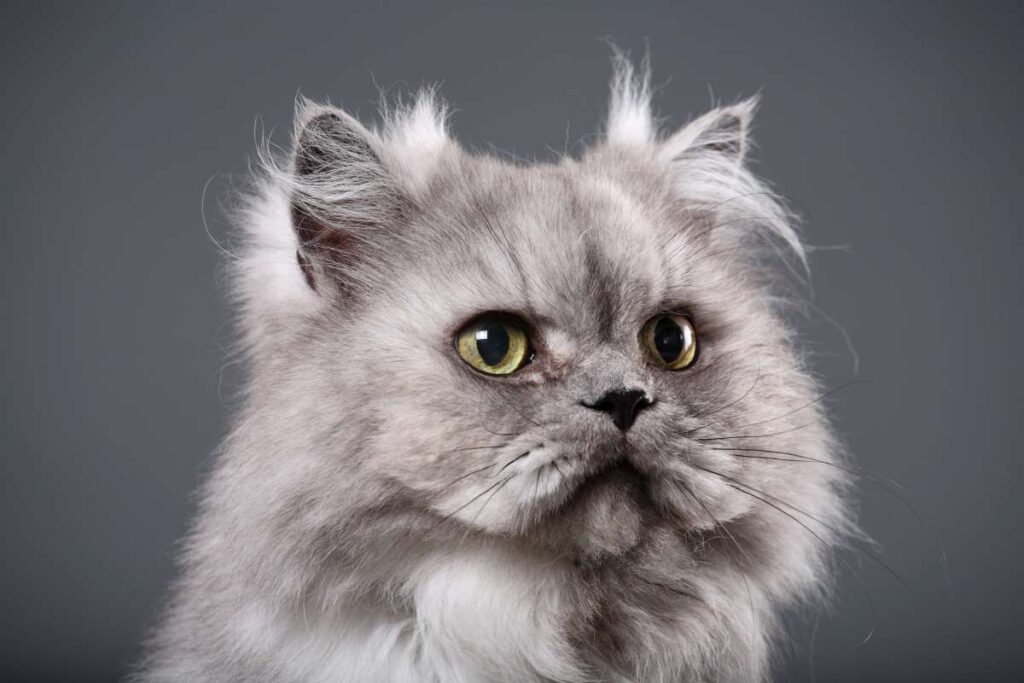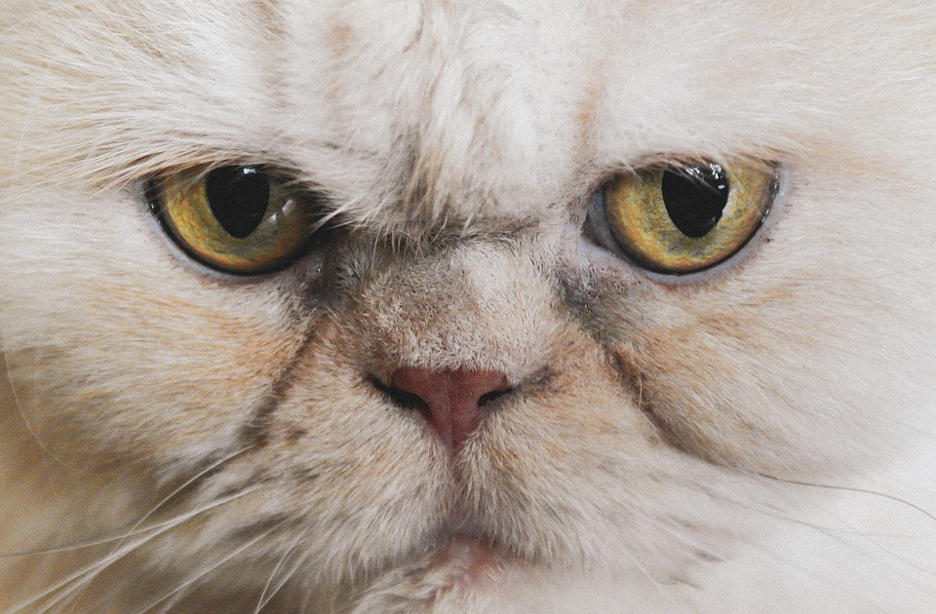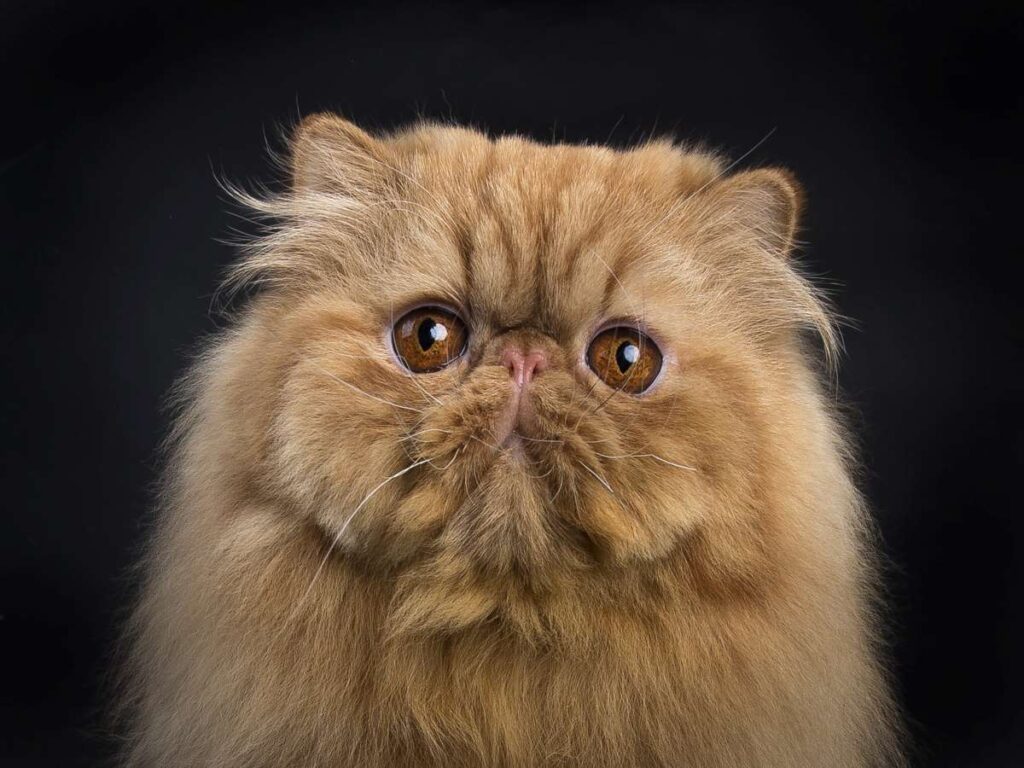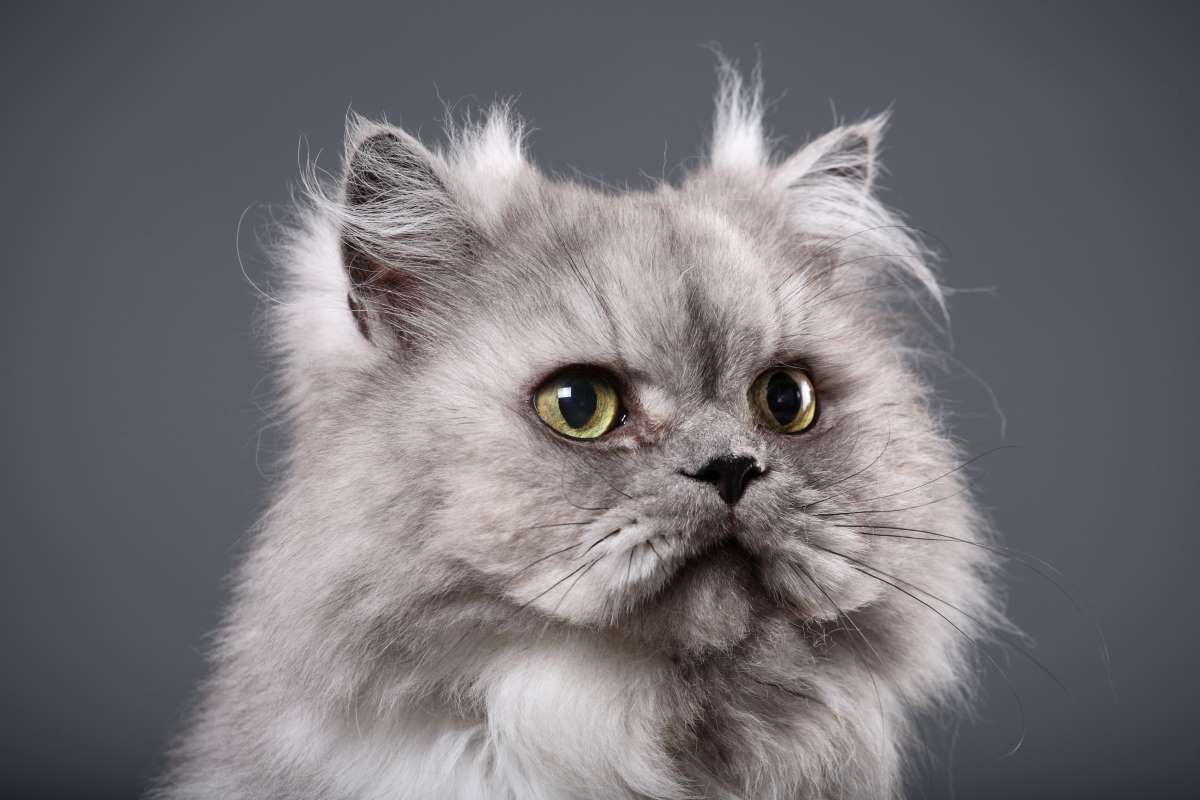Have you ever been fascinated by the unique facial features of Persian cats? Those adorable flat faces, big round eyes, and cute little noses are just too irresistible! Well, you’re in luck because today we’re going to dive into the world of Persian cats and explore all the fascinating details about their facial features. Trust me, there’s so much more to learn and you’ll be amazed at the variety and distinctiveness of their adorable faces. So if you’re ready to be captivated by these fluffy feline friends, keep reading because this article will provide you with all the interesting information you need.
When it comes to Persian cats, their facial features are truly one-of-a-kind. Their flat faces, also known as a “brachycephalic” head shape, is a defining characteristic of this breed. This unique facial structure gives them a distinctive and adorable appearance that is adored by many. But it’s not just the flat face that sets them apart. Persian cats also have large, round, and expressive eyes that can melt even the coldest hearts. Their big eyes are not only beautiful to look at but also serve a practical purpose. They have excellent vision and can see things with great clarity, making them an alert and observant companion. So, if you’re curious to know more about the fascinating facial features of Persian cats, stay tuned for our upcoming article where we’ll explore this topic in even greater detail.
Persian Cats and Their Unique Facial Features
Persian cats are known for their distinctive facial features, which set them apart from other cat breeds. From their large round eyes to their short nose and flat face, these felines possess a charm that has captivated cat lovers worldwide. In this article, we will explore the physical characteristics of Persian cats and delve into their origin, history, breeds, care, behavior, training, health issues, grooming tips, show standards, finding a breeder, adopting, and even famous Persian cats in history. So, if you’re a fan of Persian cats or simply curious about these elegant creatures, read on to discover more about their enigmatic allure.

Physical Characteristics of Persian Cats
Persian cats have a unique set of physical characteristics that make them instantly recognizable. These features include distinctive facial features, large round eyes, a short nose and flat face, a silky long coat, and a stocky build.
Distinctive Facial Features
One of the most prominent features of Persian cats is their distinctive facial structure. They have a flat face and a short nose, giving them a distinctively cute and captivating appearance. Their facial structure sets them apart from other cat breeds and adds to their overall charm.
Large Round Eyes
Another defining characteristic of Persian cats is their large round eyes. Their eyes are usually set wide apart, contributing to their sweet and innocent expression. The color of their eyes can vary, ranging from blue, green, or even copper hues. The combination of their big round eyes and adorable facial features makes Persian cats truly captivating.
Short Nose and Flat Face
Persian cats have a short, button-like nose, which is part of their distinctive facial structure. Their noses are positioned closer to their eyes, giving them a unique look. Along with their short nose, Persian cats also have a flat face, also known as brachycephalic, which enhances their adorable appearance.
Silky Long Coat
One of the most iconic features of Persian cats is their silky long coats. Their fur is luxurious and flowing, giving them an elegant and regal appearance. Persian cats require regular grooming to maintain the beauty of their coats, but the effort is undoubtedly worth it for those who appreciate their stunning appearance.
Stocky Build
In addition to their distinctive facial features and silky coats, Persian cats also possess a stocky build. They have a solid, muscular body with a sturdy frame and robust bone structure. Despite their stocky build, they move with grace and elegance, adding to their overall allure.
Origin and History of Persian Cats
The origins of Persian cats can be traced back to the ancient Persian Empire, where they were highly regarded and revered. From there, these majestic felines found their way to Europe, where they were introduced and eventually gained popularity among cat enthusiasts. Over time, the breed underwent development, resulting in the Persian cats we know today.
Ancient Persian Empire
Persian cats were believed to have originated in Persia, which is now modern-day Iran. They were highly valued and revered in the ancient Persian Empire, where they were kept as royal pets. The Persians regarded these cats as symbols of prestige and luxury, and they were often depicted in artworks and writings of the time.
Introduction to Europe
It was during the 17th century that Persian cats were first introduced to Europe, primarily through explorers and traders who brought them back from the Middle East. These elegant felines quickly gained popularity among the European nobility, who appreciated their beauty and grace. Over time, Persian cats became highly sought after and began to be bred in Europe.
Development of the Breed
As Persian cats became increasingly popular, breeders in Europe started refining and developing the breed. They focused on enhancing specific traits, such as the unique facial structure, silky coat, and round eyes. Over the years, different breeding programs produced various Persian cat breeds with subtle differences in color, pattern, and overall appearance.

Persian Cat Breeds
Persian cats come in a variety of colors and patterns, making them even more captivating. These color variations, along with the distinguished patterns, add to the uniqueness of Persian cats. Let’s delve into the different color and pattern variations, as well as some popular Persian cat breeds.
Color Variations
Persian cats come in a wide range of colors, including solid, shaded, smoke, tabby, bi-color, and more. Some common solid colors include white, black, blue, cream, red, and chocolate. Shaded and smoke Persians feature a lighter version of the solid color, with the difference lying in the amount of tipping on the fur.
Pattern Variations
The pattern variations in Persian cats add to their charm and visual appeal. Some patterns include tabby, which features stripes, spots, or swirls on the fur; calico, which features three colors in a patchwork pattern; tortoiseshell, which features a mix of black, red, and sometimes white fur; and colorpoint, which features a lighter body color with darker points on the ears, face, paws, and tail.
Popular Persian Cat Breeds
In addition to the color and pattern variations, Persian cats also have different breeds with unique characteristics. Some popular Persian cat breeds include the Himalayan, Exotic Shorthair, and Chinchilla Persian. The Himalayan breed, also known as the Colorpoint Persian, features colorpoint patterns similar to the Siamese cat but with longer fur. The Exotic Shorthair is a Persian cat with a shorter coat, while the Chinchilla Persian boasts a stunning silver-white coat.
Caring for Persian Cats
Persian cats require proper care and attention to ensure their well-being, health, and happiness. From grooming needs to managing tear stains, here are some essential tips for caring for Persian cats.
Grooming Needs
One of the most important aspects of caring for Persian cats is their grooming needs. Due to their long, luxurious coats, they require regular brushing to prevent matting and tangling. Brushing should be done at least a few times a week to keep their coat in top condition and to remove loose hair.
Bathing and Brushing
In addition to regular brushing, Persian cats also require occasional baths to keep their fur clean and free from dirt and oils. It is important to use a cat-specific shampoo that is gentle on their skin. After bathing, thorough drying is crucial to prevent skin issues.
Managing Tear Stains
Persian cats are prone to tear staining, which can occur due to their flat face and short nose. Tear stains can be managed by gently cleaning the area around their eyes with a warm damp cloth. It is also important to regularly check for any eye discharge or signs of infection.
Health and Diet
Proper nutrition is essential for the health and well-being of Persian cats. Providing them with a balanced diet that includes high-quality cat food formulated for their specific needs is crucial. Regular visits to the veterinarian for check-ups and vaccinations are also important to ensure any potential health issues are detected early.

Behavioral Traits of Persian Cats
Persian cats are known for their gentle and calm temperament. They have a reputation for being independent yet affectionate, and they possess a playful and curious nature.
Gentle and Calm Temperament
Persian cats are known for their gentle and calm temperament, making them excellent companions for those seeking a peaceful and serene environment. They are not as energetic or demanding as some other cat breeds, and they tend to enjoy a relaxed lifestyle.
Independent but Affectionate
Despite their independent nature, Persian cats also crave human companionship and enjoy being with their owners. They are known for their affectionate nature and often seek out cuddles and attention. However, they also appreciate their independence and require their alone time.
Playful and Curious Nature
Persian cats may have a calm demeanor, but they also possess a playful and curious nature. They enjoy interactive playtime with their owners and toys that stimulate their natural hunting instincts. Providing them with a variety of toys and engaging them in play sessions can help keep them mentally and physically stimulated.
Socializing Persian Cats
Socializing Persian cats is important to ensure they adapt well to their surroundings and interact positively with other pets and children. Here are some tips for socializing Persian cats.
Introducing to Other Pets
When introducing a Persian cat to other pets, it is important to do so gradually and with patience. Allow them to get accustomed to each other’s presence through scent exchange and controlled interactions. Monitor their interactions closely to ensure they are comfortable with each other.
Interacting with Children
Persian cats can get along well with children, but it is important to teach children how to handle and interact with them gently. Supervision is necessary to prevent any rough handling or accidental harm to the cats. Teach children to approach and pet the cats calmly and with respect.
Creating a Safe Environment
Creating a safe environment for your Persian cat is crucial to their well-being. Provide them with a cozy and secure space where they can retreat to when they need some alone time. Ensure that their surroundings are free from any potential hazards, such as toxic plants or open windows.

Training Persian Cats
While Persian cats are known for their independent nature, they can still be trained to some extent. Here are some training tips for Persian cats.
Litter Training
Litter training is an essential part of owning a Persian cat. Start by providing them with a clean litter box and show them its location. Place them in the litter box after meals or when they show signs of needing to relieve themselves. Be patient and consistent with the training process.
Teaching Basic Commands
Although Persian cats may not be as responsive to training as some other breeds, they can still learn basic commands such as “sit” or “come” with patience and positive reinforcement. Use treats and praise to reward them when they successfully follow a command.
Preventing Destructive Behavior
Persian cats, like any other cat, may engage in destructive behaviors such as scratching furniture or chewing on cords. To prevent such behaviors, provide them with appropriate scratching posts and toys to redirect their energy. Use deterrents such as bitter sprays on furniture or cords to discourage them from chewing on them.
Health Issues in Persian Cats
While Persian cats are generally healthy cats, they are prone to certain health issues that owners should be aware of. Some common health issues in Persian cats include respiratory problems, eye conditions, and polycystic kidney disease.
Respiratory Problems
Due to their short nose and flat face, Persian cats are prone to respiratory issues such as brachycephalic syndrome. This condition can cause difficulty in breathing, snoring, and snorting sounds. It is important to monitor their breathing and seek veterinary care if any respiratory issues are observed.
Eye Conditions
Persian cats are susceptible to various eye conditions, including excessive tearing, eye infections, and corneal ulcers. Regular grooming and cleaning of the eye area can help reduce tear stains and minimize the risk of eye infections. Regular veterinary check-ups are crucial to detect and treat any underlying eye conditions.
Polycystic Kidney Disease
Polycystic kidney disease (PKD) is an inherited condition that is commonly found in Persian cats. This condition causes multiple cysts to form in the kidneys, leading to kidney dysfunction over time. Regular screenings and genetic testing can help identify cats with PKD, and affected cats should be monitored closely and receive appropriate medical care.

Persian Cat Grooming Tips
Grooming is an important aspect of caring for Persian cats, considering their long and luxurious coats. Here are some grooming tips to keep your Persian cat looking and feeling great.
Brushing Techniques
Brushing your Persian cat’s coat regularly is crucial to prevent matting and tangling. Use a high-quality cat brush or comb specifically designed for long-haired cats. Start from the base of the fur and gently work your way through, being careful to remove any tangles or knots.
Reducing Matting
Matting can occur if the Persian cat’s fur is not properly maintained. To reduce matting, invest in a detangling spray or conditioner specifically designed for cats. Use these products to gently work through any tangles or mats in their fur.
Cleaning Facial Folds
Persian cats have adorable facial folds that may require extra care and cleaning. Use a damp cloth or specialized facial wipe to clean their facial folds gently. Make sure to dry the area thoroughly afterward to prevent any skin issues.
Persian Cat Show Standards
Persian cats have specific show standards that are used to judge their overall appearance and conformity to breed standards. Here are some key aspects of Persian cat show standards.
Judging Criteria
Persian cat show judges evaluate cats based on various criteria, including their head and facial structure, overall body shape and balance, coat condition and texture, eye color and expression, and adherence to breed standards. Cats that best meet these criteria are awarded top honors in shows.
Show Preparation
Preparing a Persian cat for a show involves meticulous grooming to ensure their coat is in prime condition. This includes regular brushing, bathing, and careful attention to details such as trimming nails, cleaning ears, and grooming the facial area meticulously.
Competition Categories
Persian cats participate in various competition categories based on their color, pattern, and age. These categories may include solid, bi-color, tabby, calico, tortoiseshell, and more. Cats compete against others within their category for awards and recognition.
Finding a Persian Cat Breeder
If you’re considering adding a Persian cat to your family, finding a reputable breeder is crucial. Here are some tips for finding a reliable Persian cat breeder.
Researching Reputable Breeders
Start by researching reputable Persian cat breeders in your area. Look for breeders who prioritize the health and welfare of their cats, have a clean and safe environment, and are registered with reputable cat associations. Online research, reading reviews, and getting recommendations from trusted sources can help in the search process.
Visiting Catteries
Once you have shortlisted potential breeders, schedule visits to their catteries to get a firsthand look at their facilities and meet the cats. Observe the living conditions, hygiene practices, and interactions between the breeder and the cats. A reputable breeder will be open to visits and transparent about their breeding practices.
Choosing a Healthy Kitten
When selecting a Persian kitten, it is important to choose a healthy and well-socialized one. Look for kittens that are active, alert, and curious. Observe their behavior and interaction with their littermates and the breeder. A reputable breeder will provide health certificates and ensure that the kittens are up to date on vaccinations and deworming.
Adopting a Persian Cat
Adopting a Persian cat can be a fulfilling and rewarding experience. Here are some important considerations and steps to follow if you’re interested in adopting a Persian cat.
Rescue Organizations
Consider adopting a Persian cat from a reputable rescue organization or shelter. Many cats are in need of loving homes, and adoption can be a wonderful way to provide a forever home to a deserving cat. Research local rescue organizations and shelters that specialize in Persian cats and inquire about the adoption process.
Adoption Process
The adoption process may vary depending on the rescue organization or shelter. Typically, it involves filling out an application, undergoing a screening process, and paying an adoption fee. The organization will assess your suitability as a pet owner and ensure that you can provide a safe and loving home for the cat.
Providing a Loving Home
Once you have adopted a Persian cat, provide them with a loving and nurturing environment. Take the time to bond with them, establish routines, and provide them with proper care, nutrition, and veterinary attention. Ensure that they have a safe and comfortable space to relax and play.
Famous Persian Cats in History
Persian cats have not only enchanted cat lovers around the world but have also made their mark in history. Here are a few famous Persian cats that have captured hearts with their unique personalities.
Choupette Lagerfeld
Choupette Lagerfeld was the beloved Persian cat of fashion icon Karl Lagerfeld. Known for her luxurious lifestyle and striking looks, Choupette became an internet sensation with her own Instagram account. She became an inspiration for many and left a legacy as the fashion world’s most famous feline.
Mr. Bigglesworth
Mr. Bigglesworth gained fame in the Austin Powers movie series as the bald and hairless Persian cat. His unique appearance and playful antics made him a memorable character, capturing the hearts of moviegoers around the world.
Princess Himmy
Princess Himmy holds the title of the heaviest cat on record, weighing a staggering 46 pounds. Her size and regal demeanor made her a notable figure in the feline world. Princess Himmy garnered attention and awe for her impressive size and unique presence.
Conclusion
Persian cats are truly fascinating creatures with their unique facial features and elegant charm. They have captivated cat lovers for centuries, and their allure continues to thrive today. Whether you’re interested in their physical characteristics, history, breeds, care, behavior, training, health issues, grooming tips, show standards, finding a breeder, or adopting, Persian cats offer a world of fascination and joy. So, embrace the enchantment of Persian cats and revel in their enigmatic allure.
Q&A
-
Q: How do I groom a Persian cat with a long coat? A: Regular brushing, occasional baths, and attention to their facial folds are essential for grooming Persian cats. Use a cat-specific brush or comb and detangling products to keep their fur shiny and free from mats.
-
Q: Are Persian cats good with children? A: Persian cats can get along well with children if they are handled gently and with respect. It is important to supervise interactions to prevent any rough handling that may distress the cat.
-
Q: Can Persian cats be trained like other cat breeds? A: While Persian cats may not be as responsive to training as some other cat breeds, they can still learn basic commands with patience and positive reinforcement.
-
Q: What are the common health issues in Persian cats? A: Persian cats are prone to respiratory problems, eye conditions, and polycystic kidney disease. Regular veterinary check-ups are important to monitor their health and detect any potential issues.
-
Q: How do I find a reputable Persian cat breeder? A: Research reputable breeders in your area, visit their catteries, and look for breeders who prioritize the health and welfare of their cats and are registered with reputable cat associations.
-
Q: Can I adopt a Persian cat instead of buying from a breeder? A: Yes, adopting a Persian cat from a rescue organization or shelter can be a wonderful way to provide a loving home to a deserving cat in need.
-
Q: What famous Persian cats are known in history? A: Some famous Persian cats include Choupette Lagerfeld, Mr. Bigglesworth from the Austin Powers movies, and Princess Himmy, the heaviest cat on record.
-
Q: How do I care for the facial folds of my Persian cat? A: Gently clean their facial folds with a damp cloth or specialized facial wipe. Be sure to dry the area thoroughly to prevent any skin issues.
-
Q: Can Persian cats be shown in competitions? A: Yes, Persian cats can be shown in competitions according to specific show standards. They compete in various categories based on their color, pattern, and age.
-
Q: Are Persian cats suitable for an apartment or small living space? A: Persian cats are generally adaptable and can thrive in different living spaces, including apartments. However, they may require some extra attention to grooming due to their long coats.
